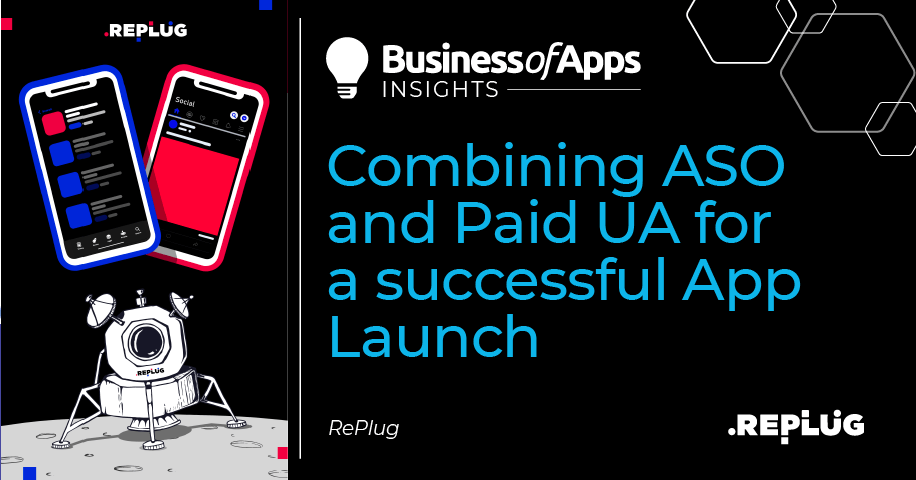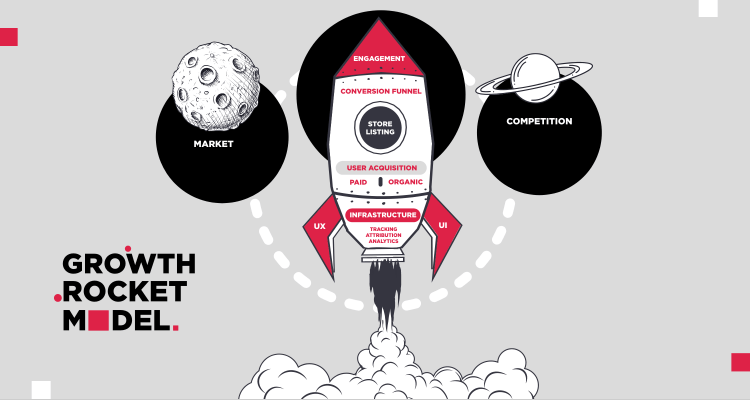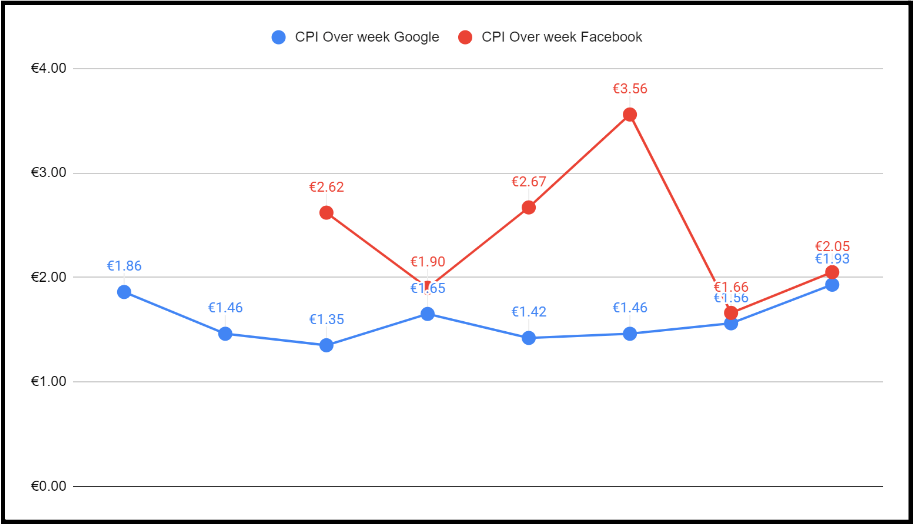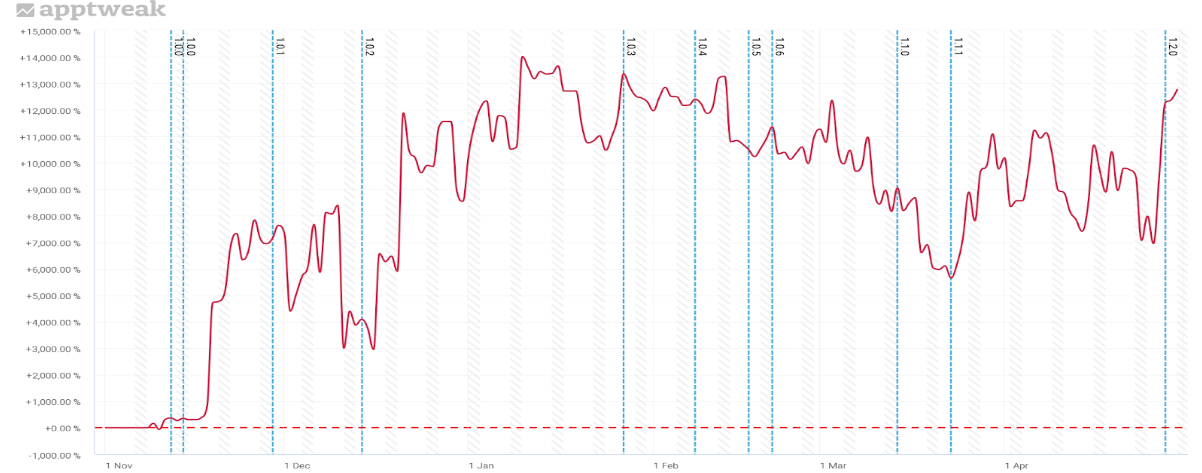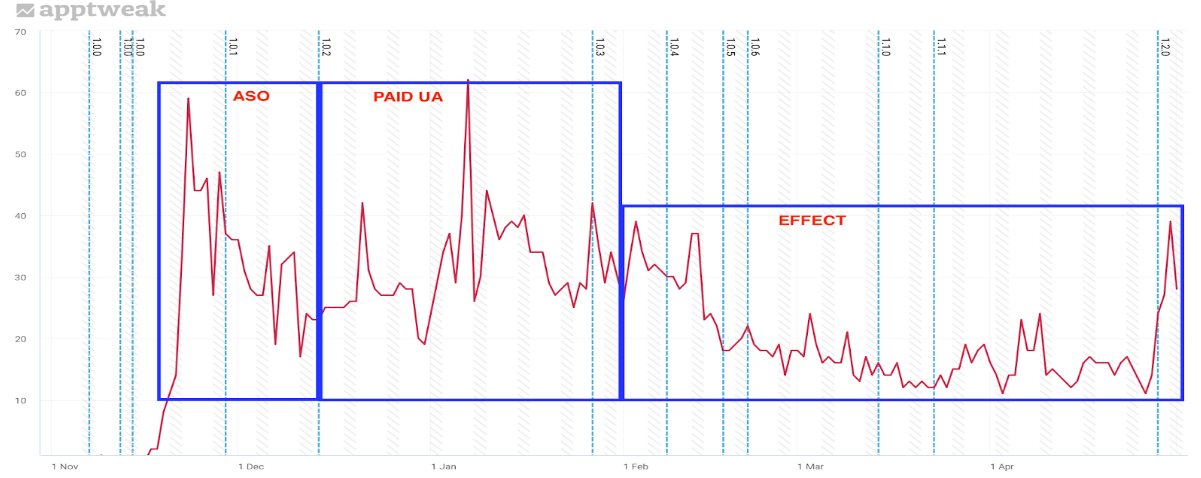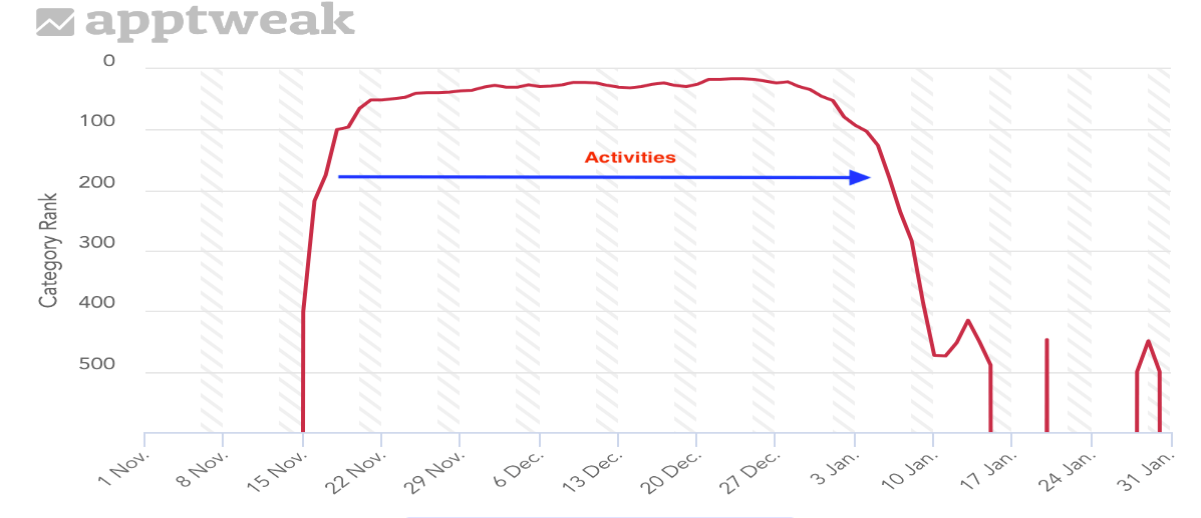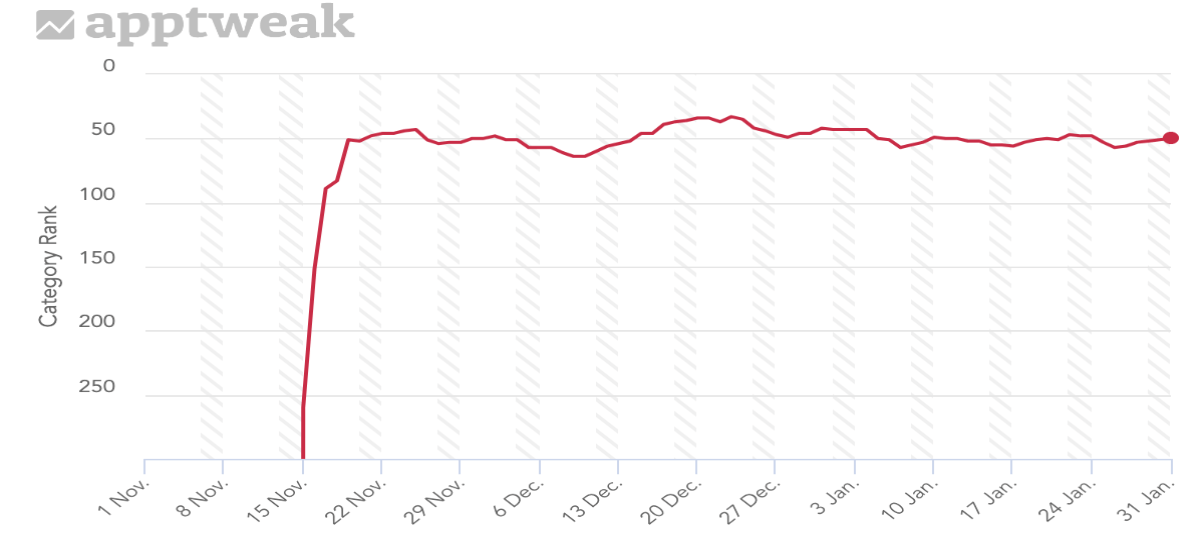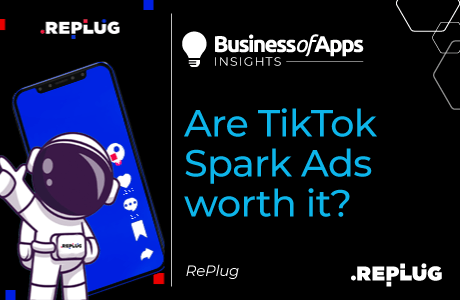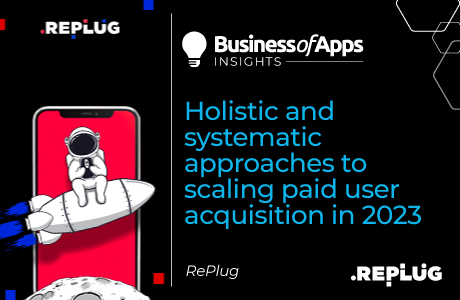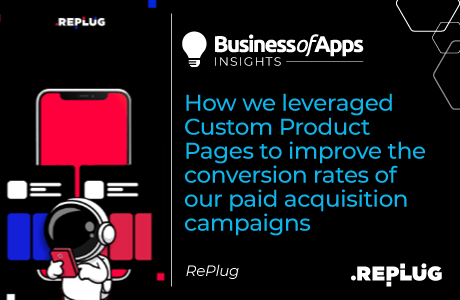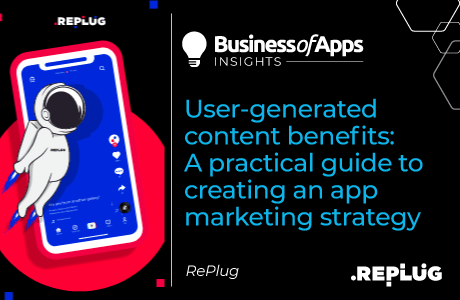With over 6 million mobile applications available in the two major Stores, getting users’ attention when launching a new mobile app has become increasingly complex. App growth has never been the result of one single activity, but rather a combination of key actions and coordination between departments to drive long-term growth. Even more so, with the recent changes in tracking and attribution, this holistic approach should play an important role in every app marketing team.
When launching a new app in the Stores or opening a new geographic location, the main goal for app developers is to increase visibility to drive more downloads (and ultimately, revenue). Many app developers erroneously believe that either investing in paid user acquisition or app store optimization alone can be enough to drive the right amount of users, hence long-term growth.
Strategizing simultaneously ASO and paid media buying campaigns can be tricky due to different departments’ objectives and alignment directions. At REPLUG, we have been evangelizing a full-funnel app marketing strategy for a while now. We believe that app growth is a coordinated effort that starts from the first impression and goes down to the last in-app activity that drives revenue.
Full-funnel marketing strategy: A winning strategy
Simply put, a car cannot function well when one of the key elements of its engine doesn’t work. In the same way, when looking at app growth, we need to consider all the relevant components of its strategy to ensure long-term success. At REPLUG, we use our Growth Rocket Model to identify key growth areas in a mobile app strategy based on the objectives we are given by our partners.
The Growth Rocket Model
Source: REPLUG
A full-funnel marketing strategy allows an organization to visualize and focus on each stage of the user conversion funnel, tweaking the right knobs to achieve the desired results.
When looking at the conversion funnel, the 3 main stages to consider are:
- Awareness – Driven by a combination of paid performance marketing and app store optimization
- Consideration – Mainly driven by the Store Listing design and relevancy to user research, as well as the first in-app interactions (UX/UI)
- Conversion – A combination of optimization of paid user acquisition activities as well as retention strategy (m-CRM)
App lauch in a new market
Launching a new mobile app in a new geographic location needs to follow specific steps to maximize the impact of our marketing activities. The first steps to consider are:
- Market research – Is our app meeting the needs of the local market?
- Create user personas – Who is our ideal customer?
- Conduct a competitive analysis – Who are our competitors, and how do they position themselves?
These simple yet important questions are crucial to determining the success of an app launch strategy. Most often than not, mobile marketers ignore the fact that an app doing great in a specific market, is not always received in the same way in another one (cultural differences, channels reach, different competitors, etc…).
A successful mobile app launch with tailor-made activities
At the end of last year, our team got approached by a mobile app development studio with many successful apps. Among those, there is a logo maker application, which was already live on iOS with over 5 million active downloads.
Considering the massive success of the app on the App Store, the team wanted to achieve similar success on the Google Play Store. They asked us to design a strategy that would include App Store Optimization and Paid Performance activities for their recently launched Android app.
Why combining ASO and Paid UA is a good growth strategy
Combining an organic and paid strategy is key in developing a long-lasting loyal customer base. With ASO, users will quickly find our app in the Stores through organic searches, as well as convert better, thanks to a clear visual and textual communication strategy. At the same time, we need to coordinate our message and paid strategy to what the users will find on the Store Pages. ASO and Paid UA work together, blending both activities are essential to drive installs and grow the app presence.
Step 1: Start with ASO
The first step our team took was to review their Google Play Store Page and optimize it to maximize visibility for long-tail keywords as well as low-hanging fruits that competitors were not yet grabbing. The team focused on an in-depth competitor analysis, identifying users’ pain points and aligning the optimization strategy that would make the app stand out from the competition. (Read more about our App Store Optimization approach.)
The optimization led to an immediate uplift in overall visibility, something that was then backed up by paid user acquisition.
Overall keywords visibility
Source: AppTweak
The optimization was timed well and aligned with the upcoming Christmas season. As a matter of fact, it took roughly 2 weeks for the changes to be digested by the algorithm to show the big jump in visibility.
Step 2: Back up the organic efforts with paid activities
As soon as the optimization was released in the Store, our paid UA team started with campaigns on two main channels: Google and Facebook. Due to the fact that we were targeting exclusively Android users, and we wanted to drive a higher number of installs to move the needle also in the category rank, the team allocated most of the budget to Google.
Considering the seasonality, the team also soon realized that the competition on Facebook would hinder our strategy to drive a high number of installs, due to the higher CPM.
CPI Variations
Source: REPLUG
From the beginning, we noticed that Google App Campaigns were performing considerably better than the Facebook ones, and for this reason, the team decided to perform a few tests to try to lower the CPIs. We tested Lookalike Audience segmentation to identify similar users to our existing audience. Through different testing, we noticed that a broader audience actually led to a sharp decrease in CPI and engagement in the app.
Step 3: Analyse the impact
The next step is to understand what has been the impact of the combined activities, not only in the short term but also in the long term. By understanding the effect of each activity, we can then also better assess what future activities we want to implement in our growth strategy.
In this specific case, the combination of ASO and Paid UA led to an increase in organic visibility for several key search terms, increasing the organic installs. On top of that, we saw an improvement in the category ranking (both free and grossing) which lasted for a longer period of time, resulting in positive revenue growth.
When looking at the visibility growth of the chosen keywords in our optimization strategy, the App Store Optimization impact was clear.
Visibility score
Source: AppTweak
By looking at the combined effect from an organic installs perspective, it was also possible to see how both ASO and Paid UA activities generated value for the app also in the 2 months following the activities.
Organic installs from keywords
Source: AppTweak
Last but not least, when analysing the category rank impact, we noticed how the paid user acquisition activities had an immediate impact on the free category rank – bringing up the app in the ranks and giving it more visibility.
Free category ranking
Source: AppTweak
However, the most important impact perhaps, that the combination of ASO and Paid User Acquisition strategy led to was the long-lasting grossing category rank, which lasted well beyond our growth strategy, showing how the revenue impact has been positive.
Grossing category ranking
Source: AppTweak
ASO and Paid UA – A winning growth strategy
Combining ASO and Paid UA is an important step in delivering long-lasting value for any app developer and company trying to master the app growth game. In this specific case, we were able to show how both organic and paid activities for a defined period of time, if done well and with a clear objective in mind, could lead to consistent growth in revenue.
It’s important to remember that neither ASO nor Paid UA is a stand-alone activity, and they should always be thought of in combination with each other. On one hand, a well-executed App Store Optimization strategy can help us increase conversion rate, drive down costs of acquisition, and, eventually, also create a long impact on the revenue our app generates. With Paid user acquisition activities, on the other hand, we can back up our organic optimization, to facilitate discovery and conversion.
In a digital world where it has become increasingly difficult to attribute paid channels value, marketing teams and companies need to start approaching app growth with a holistic mindset, combining more activities, and aligning objectives towards a unique goal.
Are you launching your mobile app in a new market and interested in learning more on how you could benefit from a full-funnel marketing approach? Get in contact with Luca Mastrorocco, REPLUG Co-founder & Head of Growth, at luca@rplg.io.



